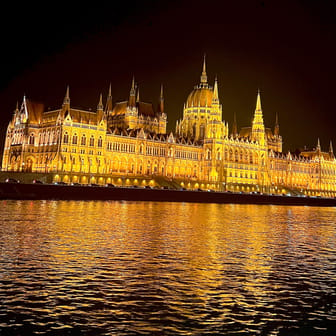Hungarian State Opera





Ask ThatchGPT
Suggest a local expert to plan my trip
Suggest an unique itinerary for my Budapest trip
What foods do Budapest locals eat
What are some true hidden gems in Budapest
Help me brainstorm trip ideas for Budapest
Help me plan a family-friendly trip to Budapest
What people say
Pedro Pereira
Available for hire
"The Hungarian State Opera House (Magyar Állami Operaház) is a historic and architectural landmark in Budapest, located on Andrássy Avenue. Originally known as the Hungarian Royal Opera House, it was designed by Miklós Ybl, one of Hungary's foremost architects of the 19th century. The construction of the opera house began in 1875, funded by both the city of Budapest and Emperor Franz Joseph I of Austria-Hungary, and it opened to the public on September 27, 1884. Before the closure of the Népszínház (People’s Theatre) in Budapest, it was the third largest opera building in the city, and today it remains the second largest opera house in both Budapest and Hungary.
Opera performances had been a part of Budapest's cultural life since the early 19th century, but it was in 1835 that the Kasa National Opera and Theatrical Troupe established a strong presence in the city. After taking over the Castle Theatre and performing under conductor Ferenc Erkel, the troupe became the Hungarian National Theatre by 1840. When the Hungarian Royal Opera House was completed, it became the home of opera performances, rapidly gaining a reputation for excellence, with a repertory of around 45 to 50 operas and approximately 130 annual performances. Since its opening, the Opera House has also hosted the prestigious Budapest Opera Ball, which began in 1886.
Many renowned artists have graced the stage of the Hungarian State Opera House, including Gustav Mahler, who served as the opera house’s director from 1888 to 1891, and Otto Klemperer, who was its music director from 1947 to 1950. In the 1970s, the state of the building prompted major renovations, which were completed in 1984, marking the centennial of its original opening.
Architecturally, the building is a masterpiece of neo-Renaissance style with elements of Baroque. It is richly adorned with sculptures and paintings by Hungary's leading artists, such as Bertalan Székely, Mór Than, and Károly Lotz. The acoustics of the auditorium are among the finest in the world, with the space holding 1,261 seats in a horseshoe-shaped layout. Noted for its superb acoustics, the Opera House is considered one of Europe's best, ranked third in acoustics after La Scala in Milan and the Palais Garnier in Paris, according to 1970s measurements.
The building’s exterior features statues of two of Hungary’s most famous composers, Ferenc Erkel and Franz Liszt, who played pivotal roles in the country's music history. Inside, the marble foyer leads to a sweeping staircase, adding to the grandeur of the space. The central hall is illuminated by a massive bronze chandelier and adorned with a fresco by Károly Lotz, depicting the Greek gods on Mount Olympus. The opera house is also home to a revolving stage and hydraulic machinery that were the latest innovations at the time of its construction.
In addition to being the venue for opera performances, the Hungarian State Opera House is home to the Hungarian National Ballet. The season runs from September to June, and the venue offers guided tours in multiple languages, allowing visitors to explore its rich history and stunning architecture.
Since 1951, the Erkel Theatre has served as the company's secondary venue. Originally opened in 1911 as the Népopera (People’s Opera), the theatre underwent various renovations over the years, serving multiple functions including as a cinema, before coming under the control of the State Opera House in the 1960s. It has been extensively renovated and reopened in 2013 after a period of closure and restoration."
Read more in:
Sofia B
Available for hire
"The Budapest Opera House is one of the city's most elegant places and was built between 1875 and 1884.
You can only visit the Opera on an official guided tour or by attending a performance.
A 60-minute tour starts every day at 13:30, 15:00 and 16:30 in English.
Price: 9000 huf / €23
Opening hours: every day 10am to 7pm
"
Read more in:
ELEFTHERIOS CHATZICHRISTOU
"The Hungarian State Opera is a cultural gem that resonates with Budapest's musical soul. Step into a world of grandeur where ornate interiors and captivating performances transport you to a bygone era. It's a must-visit for those seeking to immerse themselves in Budapest's rich artistic heritage."
Mentioned in these guides
About Hungarian State Opera
Get the inside scoop on Hungarian State Opera from local experts, travel creators, and tastemakers. Browse genuine trip notes, Hungarian State Opera reviews, photos, travel guides, and itineraries from real travelers and plan your trip with confidence.
Website
Phone
Save this spot for later or start mapping out a new trip today
Try our AI Travel Assistant and get instant answers to any questions about your trip.
Ask ThatchGPT


